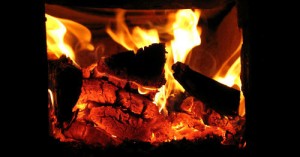Chimney and Wood Stove Fire Safety
Each year there are hundreds and thousands of fire incidents involving chimneys, fireplaces, and wood stoves. These fires are responsible for injuries, and sometimes deaths, to family members and emergency workers. Fires can also rack up a loss in property damage totaling millions of dollars each year across the United States. Of all the fire incidents throughout the country each year, heating system linked incidents make up over 40 percent of all fires.
With that said, it’s important to be prepared and know the facts of fire safety for chimney and wood stoves.
Purchasing a Wood Stove
- Always be sure the wood stove you are purchasing is approved by a recognized testing laboratory to prevent owning faulty products or equipment.
Installation of a Wood Stove
- Make sure your wood stove is up to code and inspected as required by a building inspector or the law wherever you are living.
- It is important to allow about 36 inches of space around your wood stove to prevent combustibles from coming into contact with the heat source.
- Solid fuel heating appliances cannot share a common flue with chimney flues used by other solid fuel, fossil fuel, or gas fired appliances.
Heating Appliance and Chimney Inspections
- Have your chimney and flue inspected by a qualified chimney sweep before using it. Cracks in the flue or mortar joints can let flames and gases within the structure and be very dangerous.
Proper Use of a Wood Stove, Fireplace, and Chimney
- Chimney fires are usually caused by buildup of creosote, a tar-like byproduct of wood burning. For this reason you should have your chimney flue cleaned before each heating season and burn only dry, well-seasoned hardwood to stifle the buildup of creosote.
- Do not use flammable liquids to start a fire.
- Keep children away from an open flame or wood stove and never leave them alone near one.
- Make sure that the damper is open before lighting the fire. If you fail to do this, smoke and carbon monoxide could accumulate inside your house. Also, be sure not to close the damper before the fire has died and the embers are cold.
- Use a fireplace screen to protect your home from sparks and an open flame.
- Be sure your home has smoke alarms and carbon monoxide detectors that are working so you can be alerted of any threats.
Proper Ash Disposal
- When cleaning ashes from your wood stove or fireplace, be sure to shovel them into a metal bucket with a metal lid and put them on the ground outside so that they are away from your home or building. Never put ashes into a paper bag or cardboard box or something similar as ashes and embers can stay hot for days and ignite combustibles.
Carbon Monoxide and Smoke Alarms
- Carbon monoxide alarms are now required in all homes with chimneys or wood stoves. Be sure to install one on every level of your home and no more than 10 feet from every bedroom door.
- Smoke alarms should be installed on every level of your home, at the bottom of every stairwell, and outside each sleeping area.
- Check batteries and test alarms regularly. Try to change the batteries when we change the clocks.
Resources: Massachusetts Department of Fire Services
Related Posts:
How to Properly Dispose of Fireplace and Wood Stove Ashes
How Chimney Fires Damage Chimneys
8 FAQ about Gas Stoves
Wells & Sons Chimney Service offers a full range of chimney cleaning and chimney repair services. They also sell and install wood stoves. Their service area extends across Berwyn, Allentown, Lansdale, Norristown, Boyertown, Pottstown, Gilbertsville, and surrounding areas in Southeastern Pennsylvania.









